Visualizing Science: Pinar Yoldas’ Silent Spring
During the March for Science rallies in Washington DC and around the nation in April 2017, conversations swirled around the need for scientists and communicators to align to create accessible stories about scientific progress for the general public. The Stamps School of Art & Design’s 2016-17 Roman J. Witt Artist in Residence, Pinar Yoldas, PhD addresses this need head on.
“Being an academic myself, I can say it’s so boring to go to conferences, where there’s a slideshow, and people are just talking, talking, talking,” said Yoldas. “You see people sitting there, yawning while someone’s talking about something super-interesting. But the environment kills people’s enthusiasm a little. So I started thinking about how to make it more interesting and more invigorating for everyone.”
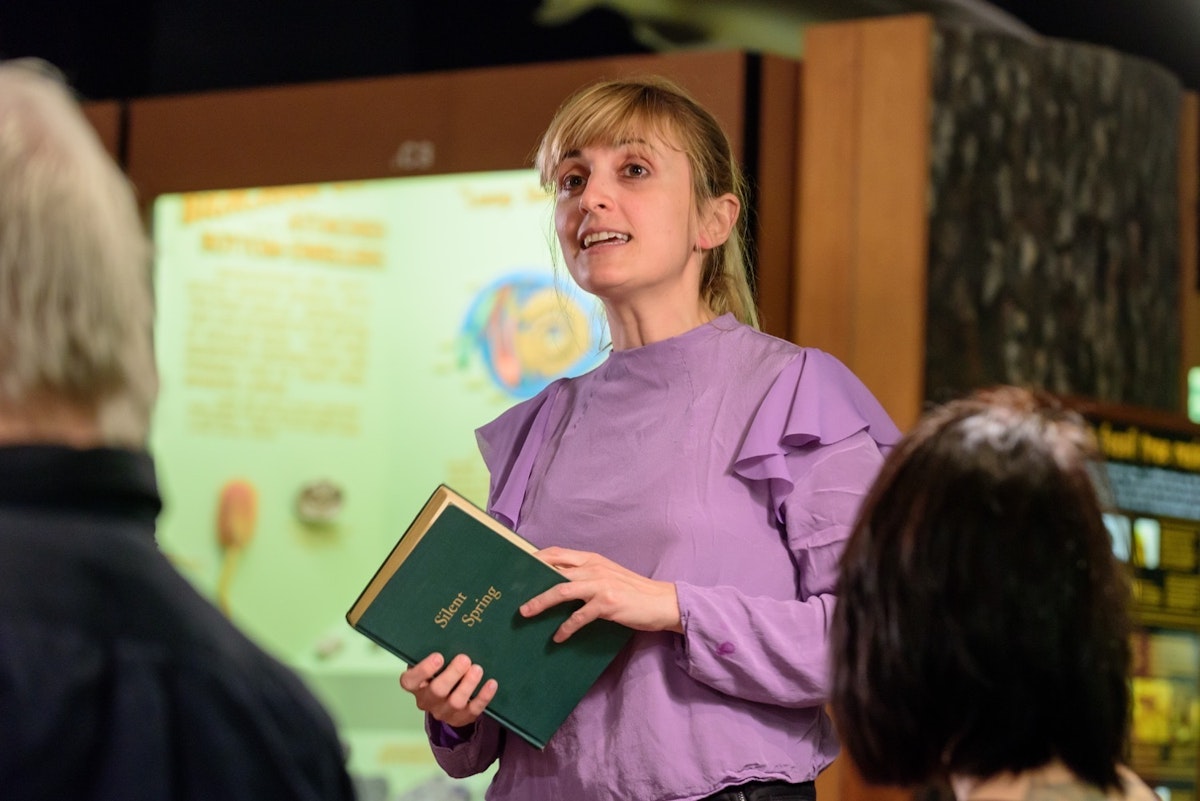
Stamps students worked with Yoldas during the 2016-17 academic year on a Silent Spring dining performance, inspired by Rachel Carson’s seminal 1962 environmental advocacy text. On March 15, 2017, Yoldas gathered together local organic farmers, a restauranteur, and U-M scholars (many of whom study eco-friendly agriculture) for a performative dinner table discussion, at the U-M Museum of Natural History, about the role chemicals play in modern food production.

Yoldas’ dining table, decked out with a dusty rose tablecloth and matching cloth napkins – subtly imprinted with chemical compounds found in insecticides and herbicides – featured several items from the Environmental Working Group’s “dirty dozen” list: produce known to carry the highest loads of pesticide residues, including strawberries, spinach, nectarines, apples, peaches, pears, cherries, grapes, celery, tomatoes, sweet bell peppers, and potatoes. Plus, each ceramic plate had been glazed with printed information about a particular chemical used in food production, providing talking points for the evening.
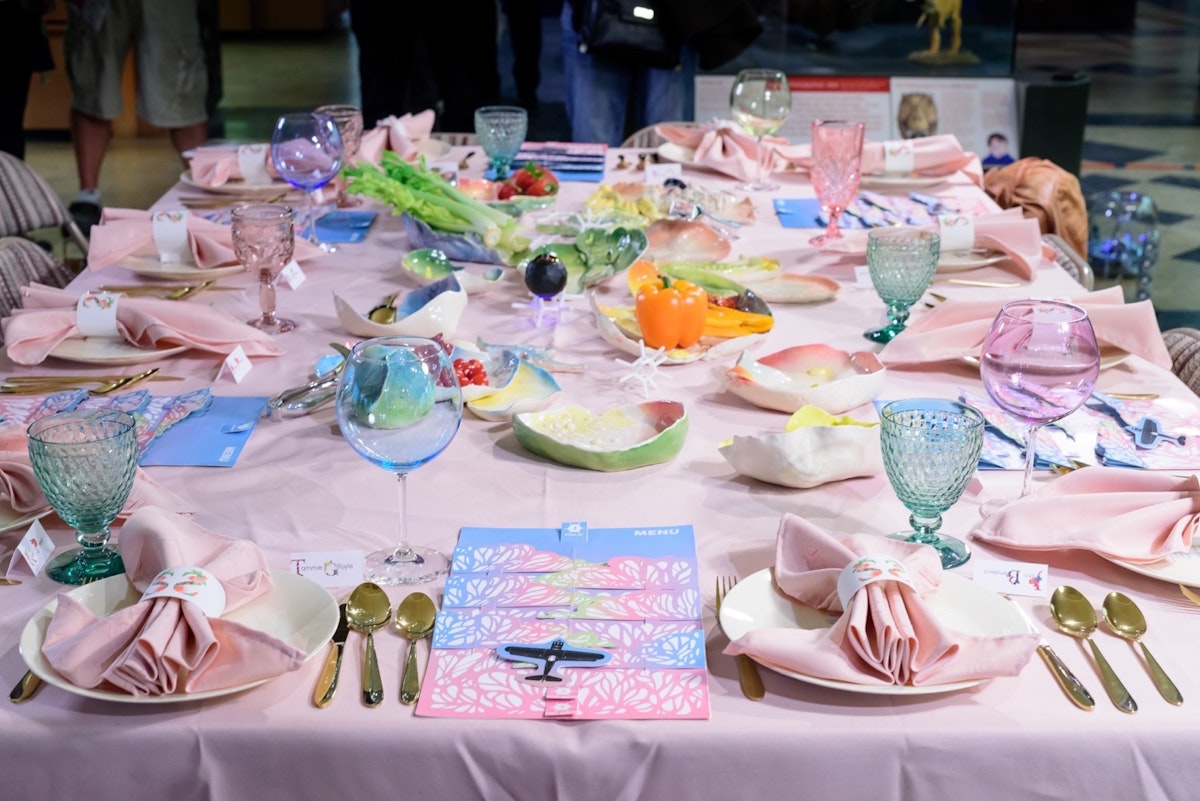
Fostering this dialogue between faculty members from multiple departments at U-M, as well as people in the community, was a primary goal for Yoldas, though not every guest invited ended up attending. There was an honorary place setting for Carson, who died just two years after her book’s release, at age 56. But more pointedly, Ken Powell, CEO of General Mills, did not attend, nor did Monsanto Executive Vice President and Chief Technology Officer Robert Fraley, nor did Governor Rick Snyder.
“In the beginning, I wanted to have governors and high level (politicians) who are responsible for environmental and public health policy to be part of this conversation,” said Yoldas. “I knew the CEOs wouldn’t show up, but you can use that as part of the performance, too. Their absence means something.”
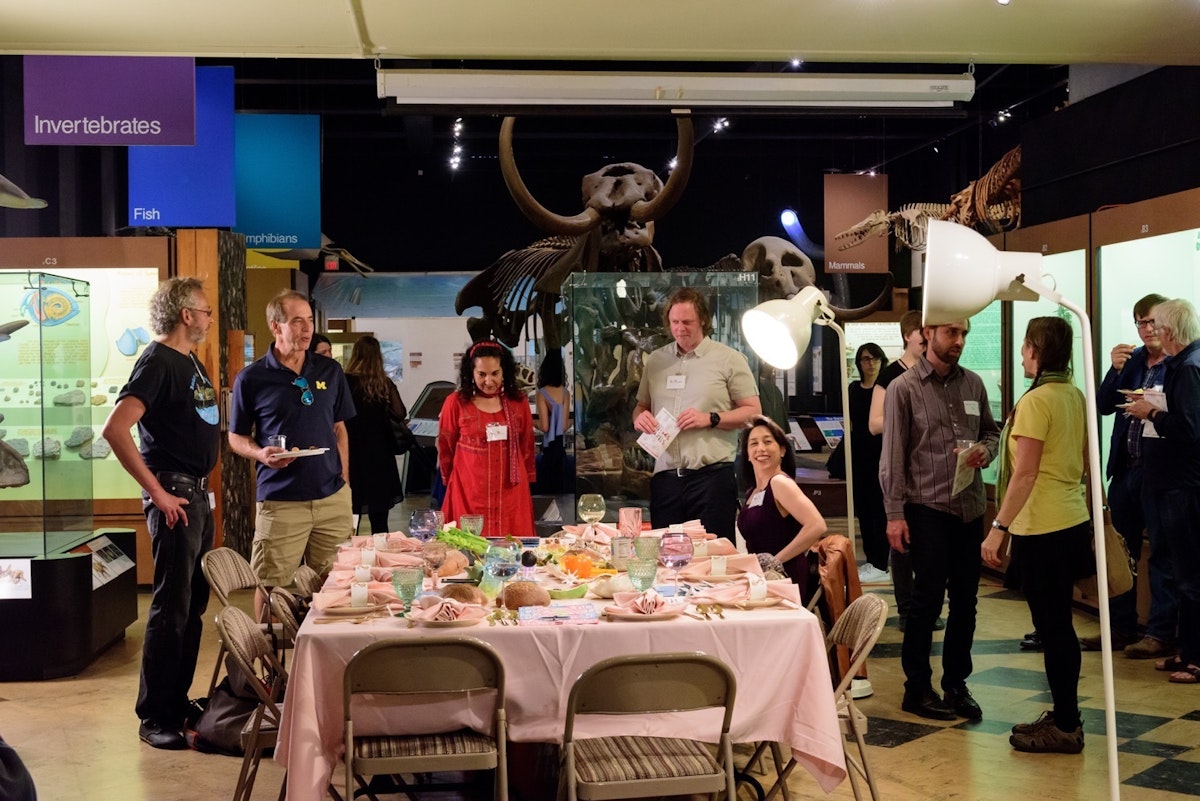
Among those seated around the table on Saturday night were agro-ecologist Ivette Perfecto; Frog Holler Organic Farm’s Kenneth King; independent organic farmer Jackie Green; ecologist John Vandermeer; Stamps School professor Joseph Trumpey (who lives off-the-grid with his family in an eco-friendly house he designed on a 40 acre farm); biologist John Benedict; Zingerman’s co-founder Ari Weinsweig; and U-M lecturer Margot Finn, whose work examines the intersection of American culture and food.
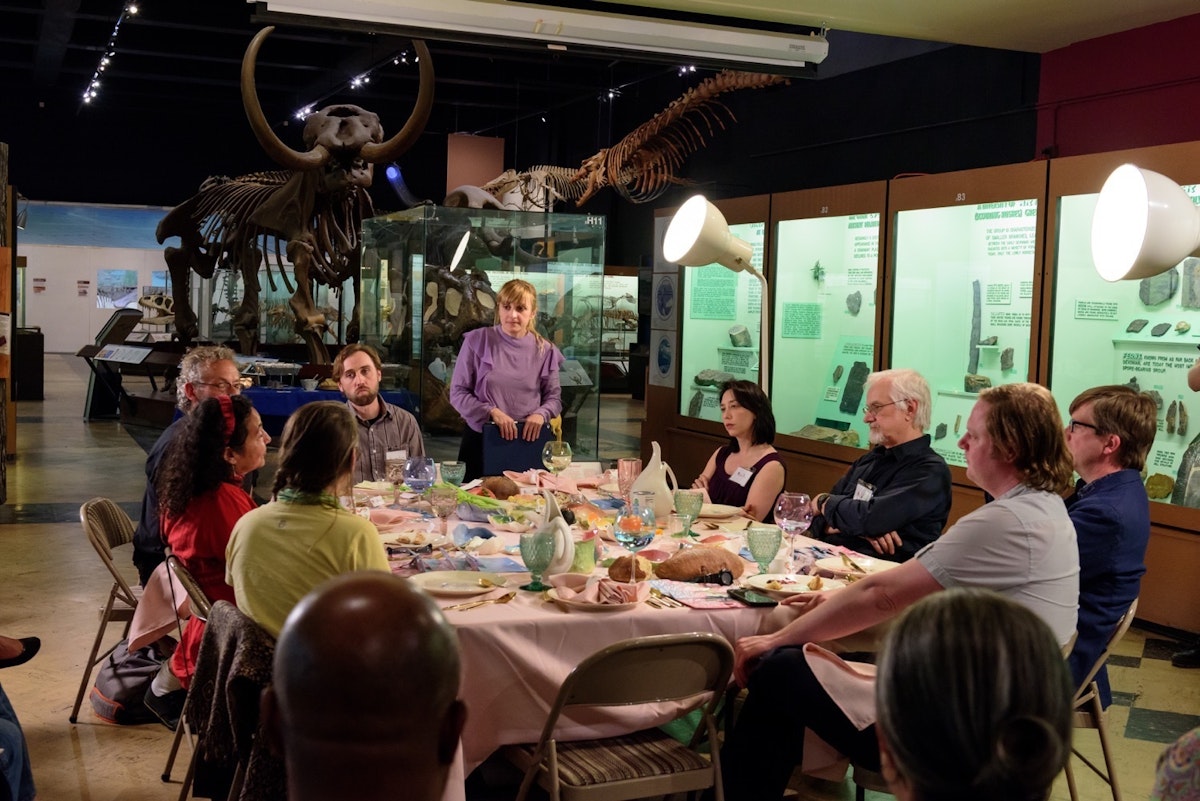
Yoldas executed her vision for Silent Spring as part of the Stamps School’s Roman J. Witt Artist in Residence program. Named for art and design alumnus Penny Stamps’ father, the annual residency program selects one artist from a robust pool of applicants (approximately 120 for the 16/17 academic year) and offers a stipend, access to the school’s state-of-the-art studio facilities, and connections to collaborators and resources found only at a top-tier research university. In exchange, the Roman J. Witt Artist in Residence offers Stamps students direct access to work with some of the world’s most engaging contemporary artists.
“We want an experience for our students, where they can see the work evolve from first concept to completion, and get a sense for what that looks like,” said Stamps’ Director of Visitors’ Programs, Chrisstina Hamilton. “We loved the fact that (Yoldas’ proposal) was dealing with toxicity in our world. When we were reading it, it happened to be after the terror and horror of the Flint water crisis story broke nationally, so the issue was very much on our minds.”
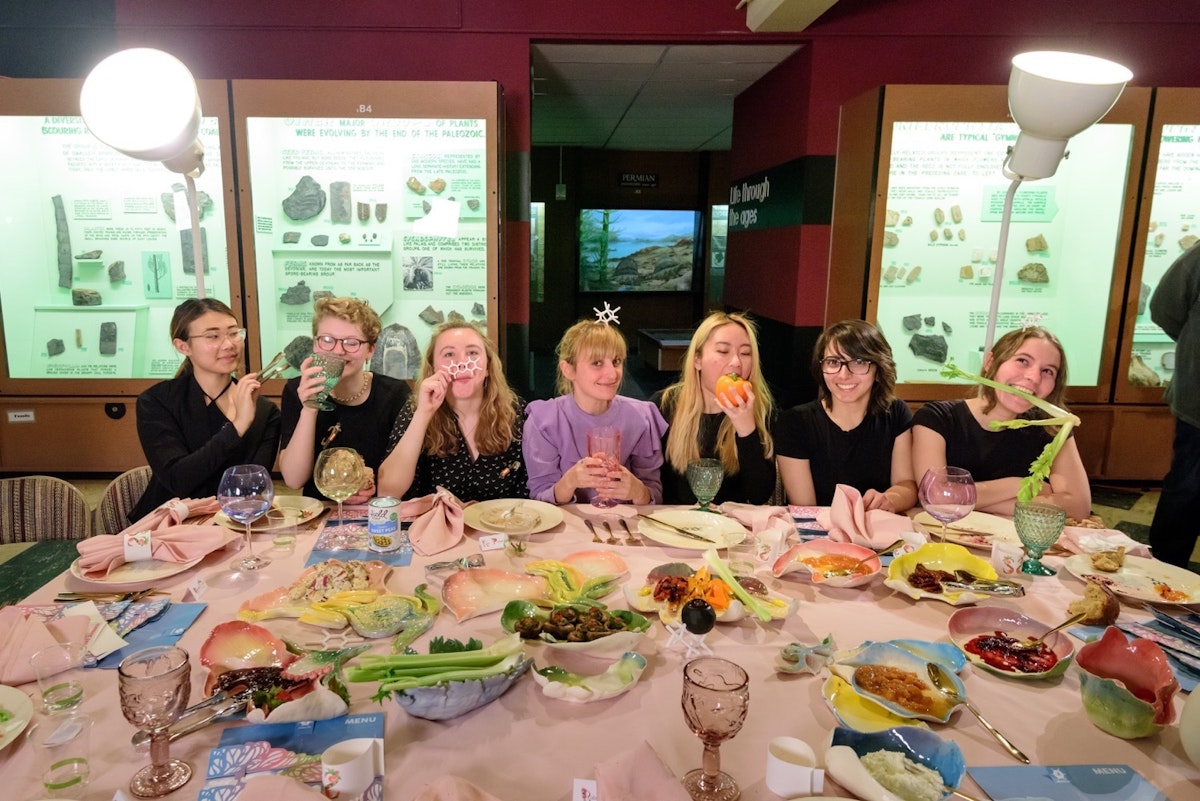
Stamps junior Megan Gizzi (BA ’18), originally from Dundee, Michigan, was part of a core group of students who worked on Silent Spring beginning last fall. Gizzi said she signed on when Yoldas visited one of her classes and talked about her vision.
“She has incredible ideas, and she’s really passionate,” said Gizzi. “And working with fellow students who are as eager as I am about the project has been a great experience. I really learned so much about organizing events and big exhibitions like this.”
Yoldas, for her part, credits the students for their dedication and creative input, including suggestions regarding whom to invite. They also helped organize set-up and clean-up; catering (additional dishes were available for all attendees, including one station with fried crickets and worms); and the layout for the dinner party, which took place among the museum’s ancient animal skeletons and display cases.
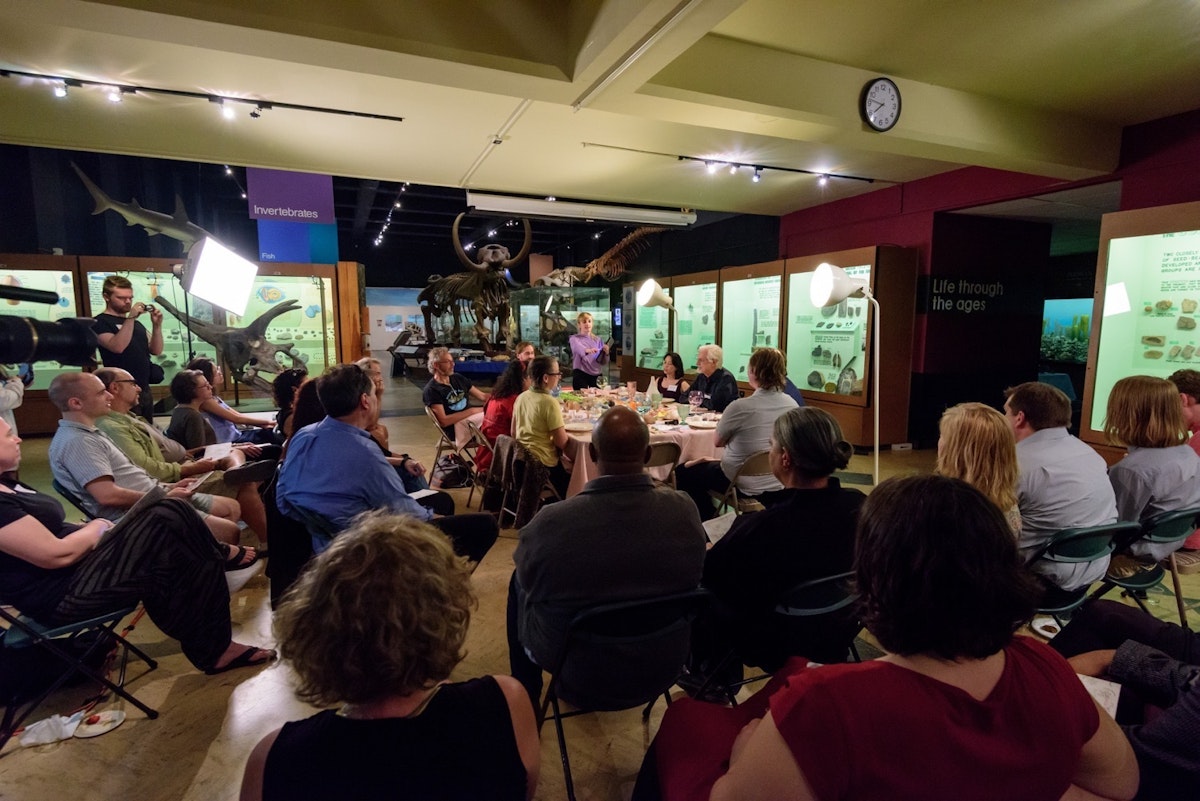
“(The students) did so much,” said Yoldas. “…We’d come together and discuss articles about the dioxane plume here in Ann Arbor, and the Flint water crisis. We had sessions where we just talked about dinnerware design and different approaches we might take. The students who were there Saturday night – there were nine of them, I think, and only one was getting credit. Everyone else showed up because they’d become so invested in the project. They were so active in every single step.”
Part of the planning conversations focused on the subtle details, like an interactive menu topped with an illustrated black crop duster; the look of the stemware and cutlery; and how best to marry everyday domestic items with Carson’s seminal book.

“I was thinking a lot about how we’re constantly surrounded by surfaces, whether it’s sheets on a bed, book covers, or cups, and there are often colored graphics on them, … so I asked myself, ‘What information do I retrieve from these surfaces?’” said Yoldas. “For centuries, people have decorated the bowls and plates we eat on. It just made sense to me to use them to convey information about the kinds of things Rachel Carson was talking about. It’s like a book, but instead of pages, the information is conveyed on dishes and bowls.”
The evening’s conversation grew to include discussions about additives in processed foods; how eco-friendly food production must result in food that tastes good, or it will fail in the open market; and how, if more people grew their own food, as they more commonly did in the past, many problems related to agri-chemicals would be significantly reduced.
But the discussion also touched on how fortunate locals are to be among so many who care about where their food comes from, and whether or not it has been treated with chemicals.
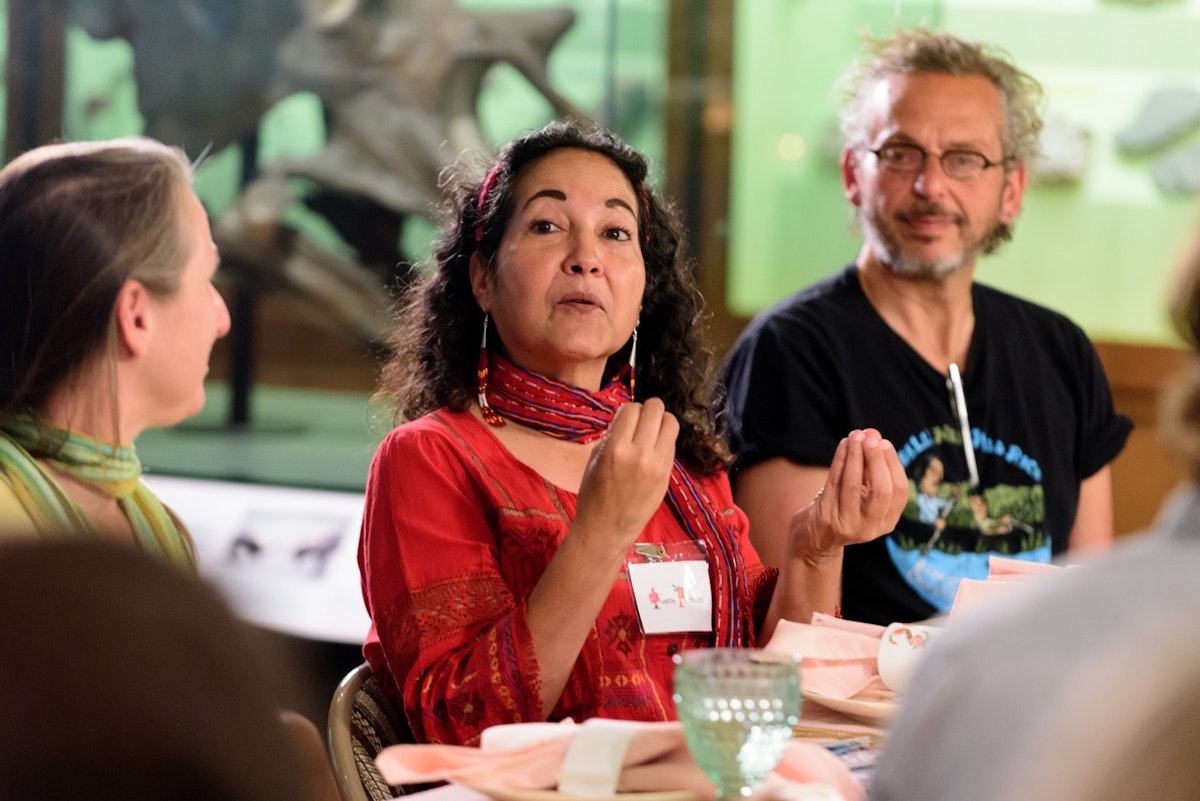
Yoldas considered her Silent Spring dinner party performance to be both a learning experience (for similar, future projects) and an encouraging success. “In a sense, there’s nothing new under the sun, right?” said Yoldas. “When people go to an art event, whether it’s in New York or Amsterdam or wherever, they go to the opening, they walk around, and they mingle. These events are ultimately mixers for people, and the art – most of the time, it’s unrelated to what they end up talking about. They may look at a piece for 5 minutes, and then talk to an acquaintance or someone they want to network with. But before our event even started, and after it ended, we invited everyone to talk about food topics with each other. They may have talked about other things for a while, too, of course, like what things their kids are doing, but because of the context, food was going to be at the core of the conversation, because it was a mixer for people who are concerned about food. That part of it really worked.”
Story by Jenn McKee.
To learn more about Pinar Yoldas’ work, visit pinaryoldas.info. To learn more about the Roman J. Witt Residency program, visit stamps.umich.edu/witt.